Not long after midnight on Dec. 7, 1972, the last crewed mission to the Moon, Apollo 17, lifted off with three astronauts: Eugene Cernan, Harrison Schmitt, and Ronald Evans.
Experience the Apollo 17 launch and follow the mission in real time.
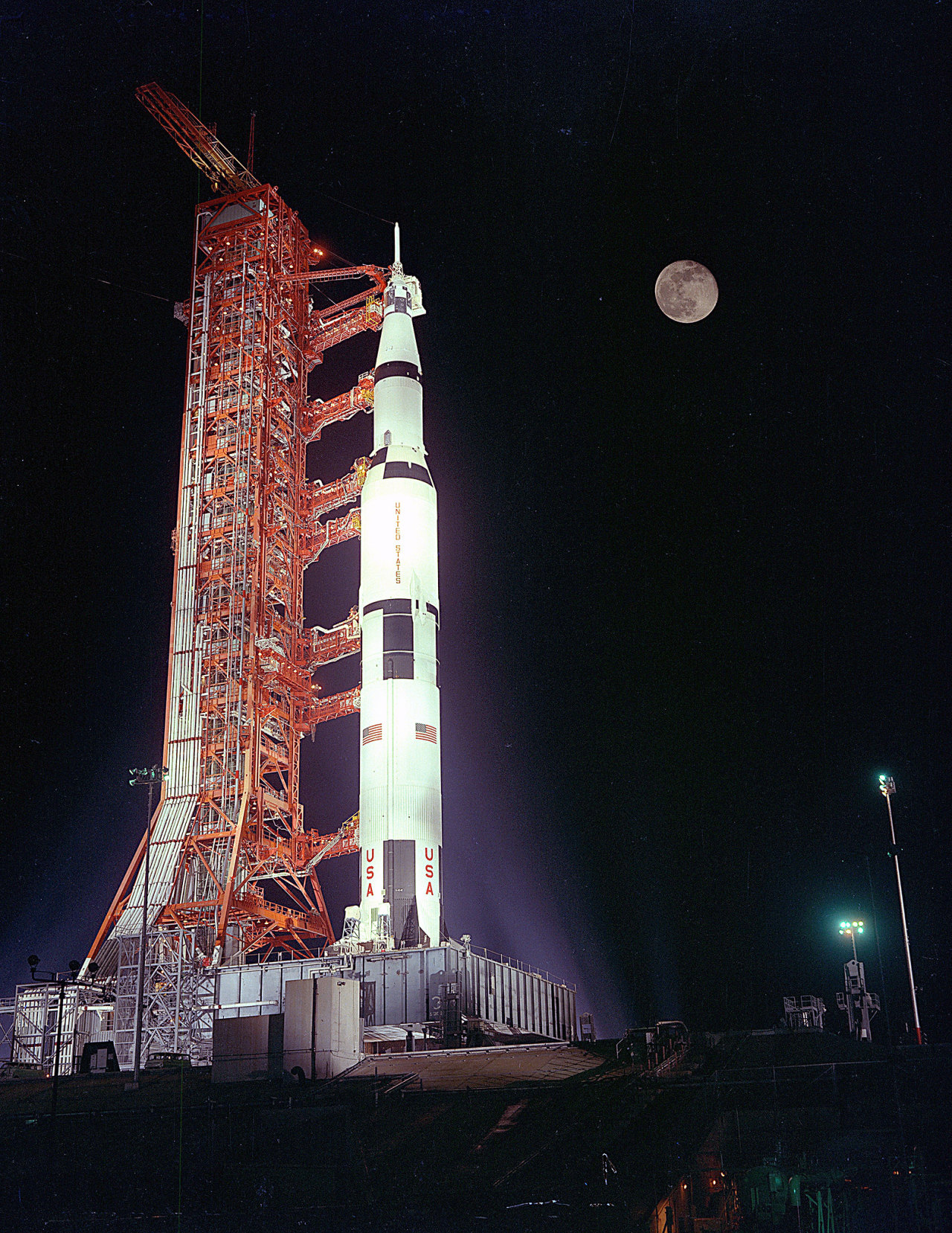 ALT
ALTMeet the Crew
Let’s meet the astronauts who made the final Apollo trip to the Moon, including the first scientist-astronaut.
Gene Cernan: In 1972, Apollo 17 Mission Commander Eugene A. Cernan had two space flights under his belt, Gemini 9 in June 1966, and Apollo 10 in May 1969. He was a naval aviator, electrical and aeronautical engineer and fighter pilot.
Ron Evans: Apollo 17 Command Module Pilot Ronald E. Evans was selected as a member of the 4th group of NASA astronauts in 1966. Like Cernan, he was an electrical and aeronautical engineer, and naval aviator before his assignment to the Apollo 17 crew.
Harrison (Jack) Schmitt: Lunar Module Pilot Dr. Harrison (Jack) Schmitt joined NASA as a member of the first group of scientist-astronauts in 1965. Before working for NASA, Schmitt was a geologist at the USGS Astrogeology Center. He was on the backup crew for Apollo 15 before being selected for the prime crew of Apollo 17. He became the first of the scientist-astronauts to go to space and the 12th human to walk on the Moon.
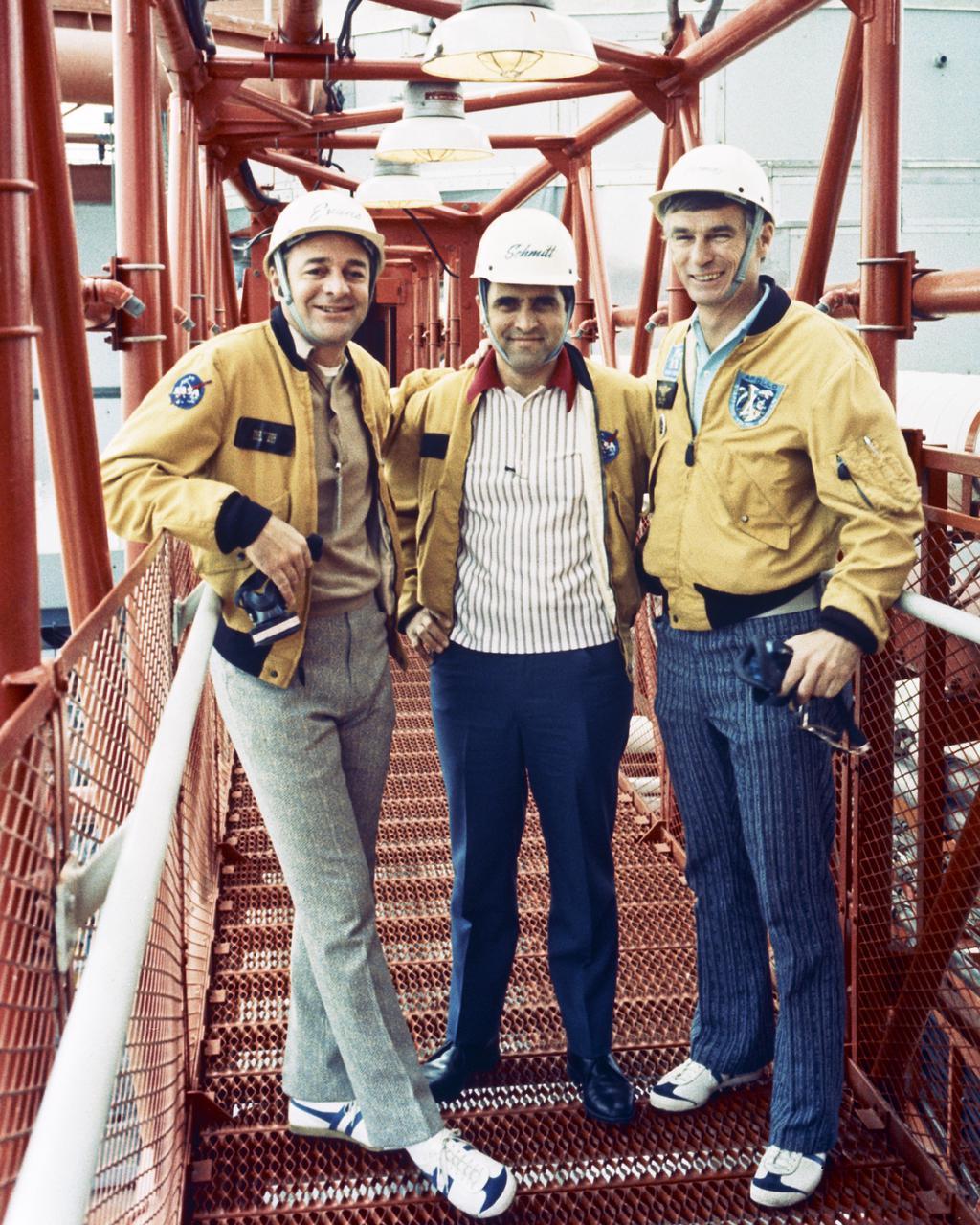 ALT
ALTThe Blue Marble
“The Blue Marble,” one of the most reproduced images in history, was taken 50 years ago on Dec. 7, 1972 by the Apollo 17 crew as they made their way to the Moon.
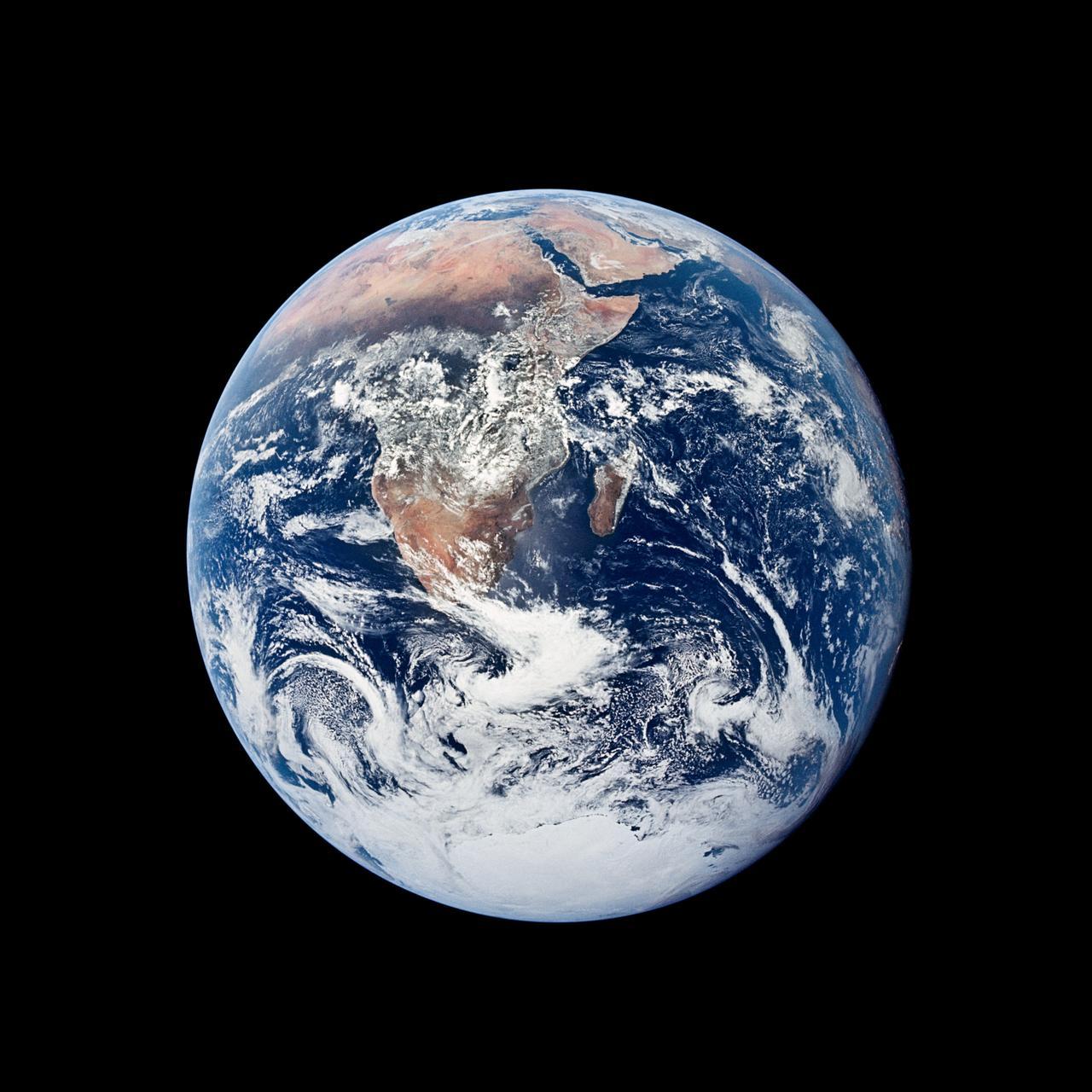 ALT
ALTBag of Soup, Anyone?
NASA astronauts have an array of menu items to stay well fed and hydrated on missions. For Apollo 17, the menus allocated around 2,500 calories per day for each astronaut. They included:
- Bacon Squares
- Peanut Butter Sandwiches
- Frankfurters
- Lobster Bisque
Like anything going to space, weight and containment matter. That’s why the Apollo 17 menu included plenty of soups and puddings.
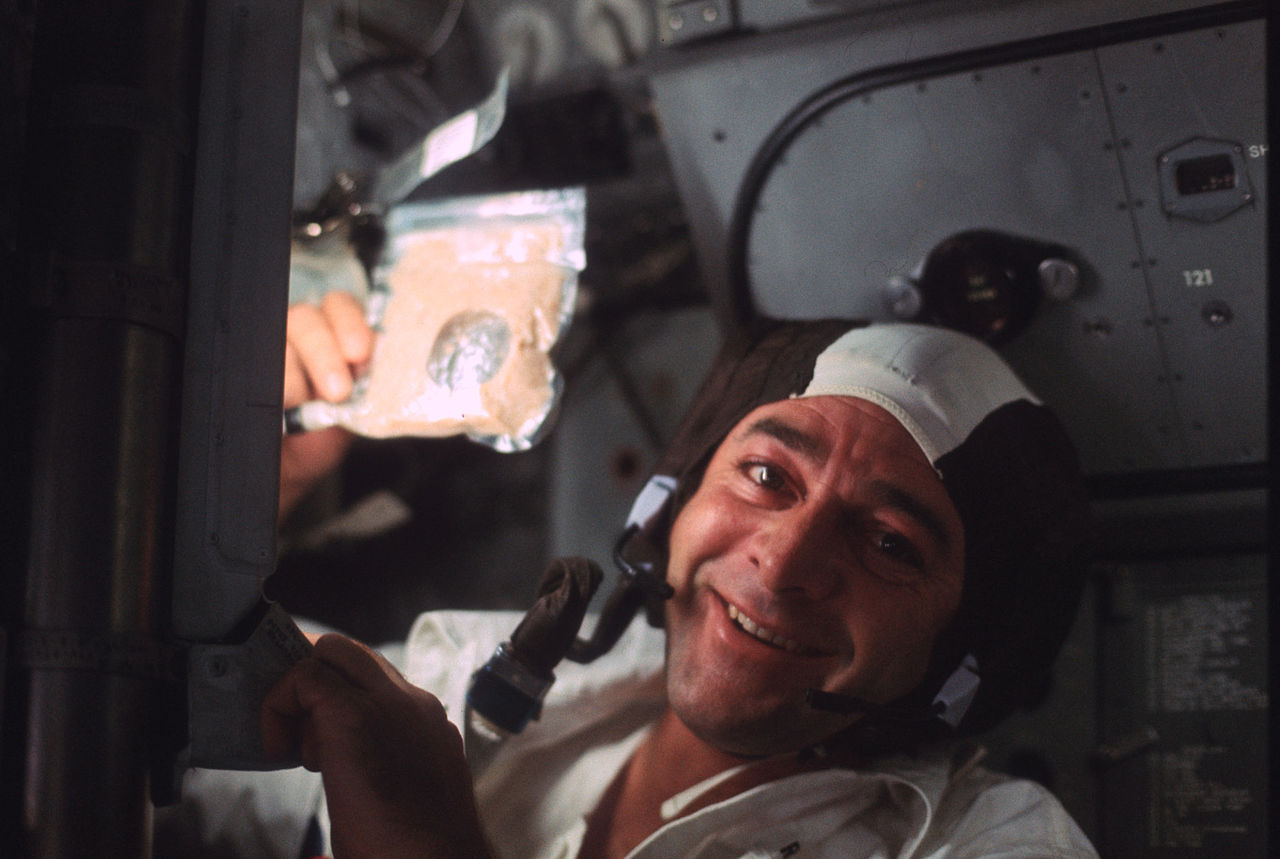 ALT
ALTSynchronicity
On Dec. 11, 2022, the Artemis I mission will be splashing down on Earth after its 25.5-day mission. At 2:55 p.m. 50 years prior, the Apollo 17 lunar module (LM) landed on the Moon, with Commander Gene Cernan and LM Pilot Harrison Schmitt on board. Ron Evans remained in the Command and Service Module (CSM) orbiting the Moon.
Experience the landing.
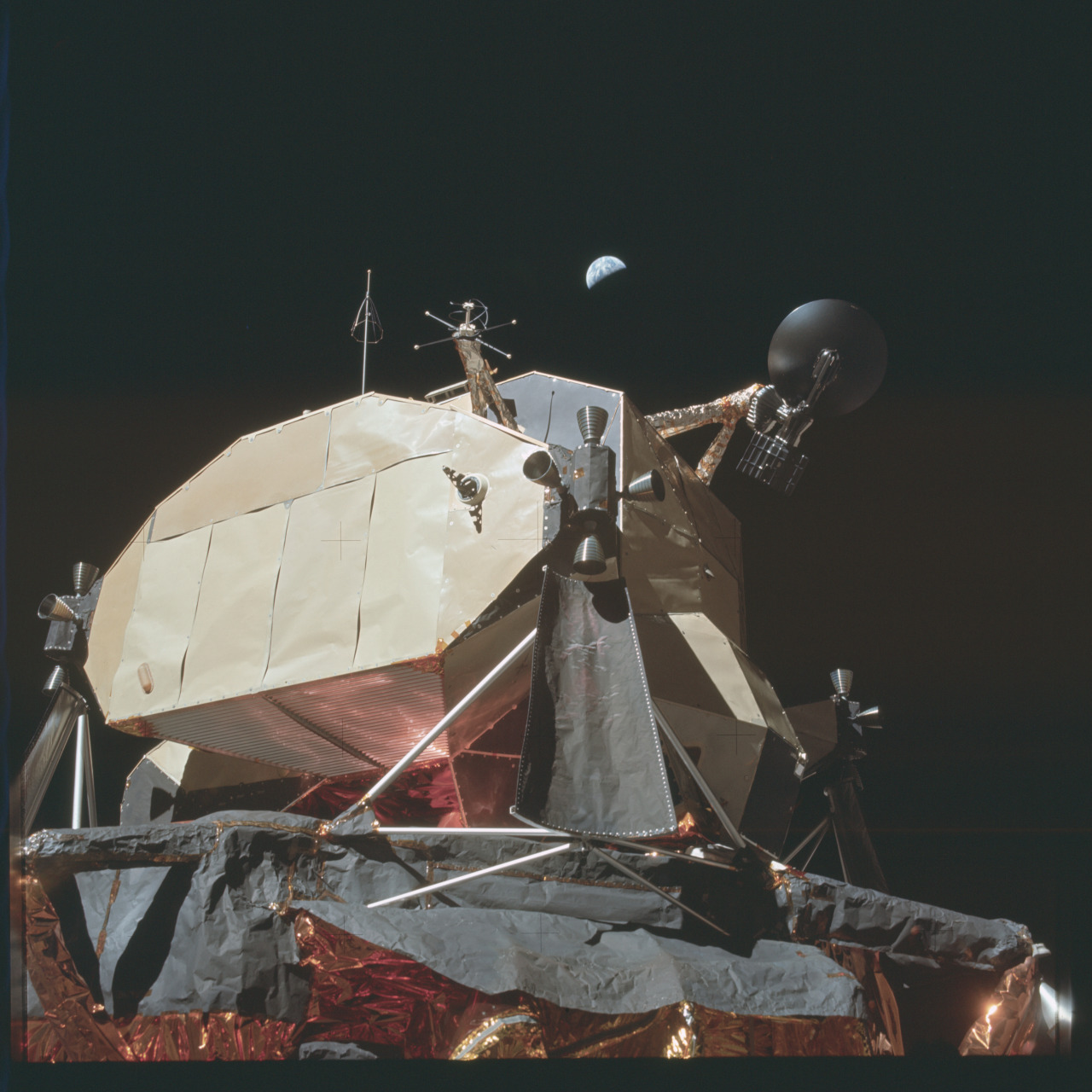 ALT
ALTPlanting the Flag
One of the first tasks the Apollo 17 crew did on their first moonwalk was to plant the American flag. There’s no wind on the Moon, but that doesn’t mean the flag has to droop. Did you know that a horizontal rod with a latch makes the flag appear to be flying in the wind? Gene Cernan carefully composed this photo to get Schmitt, the flag, and the Earth in a single shot.
So, is the flag still there? Images of the Apollo 17 landing site from the Lunar Reconnaissance Orbiter Camera show that in 2011 the flag was still standing and casting a shadow!
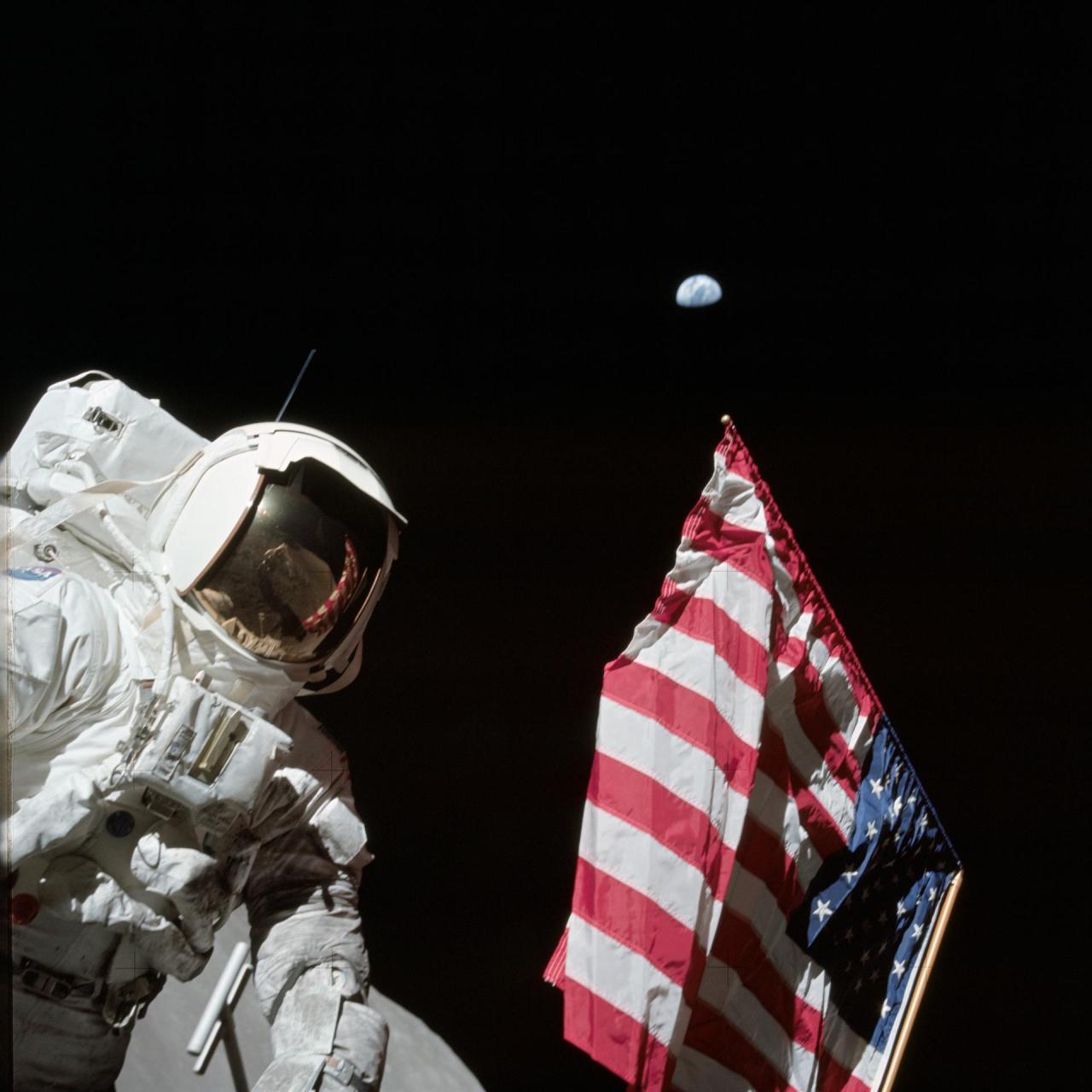 ALT
ALTMoon Buggy
During Apollo 17, the Lunar Rover Vehicle (LRV), nicknamed the Moon buggy, logged the farthest distance from the Lunar Module of any Apollo mission, about 4.7 miles (7.5 km).
As a precaution, the LRV had a walk-back limit in the event of an issue; astronauts had to have enough resources to walk back to the lunar module if need be.
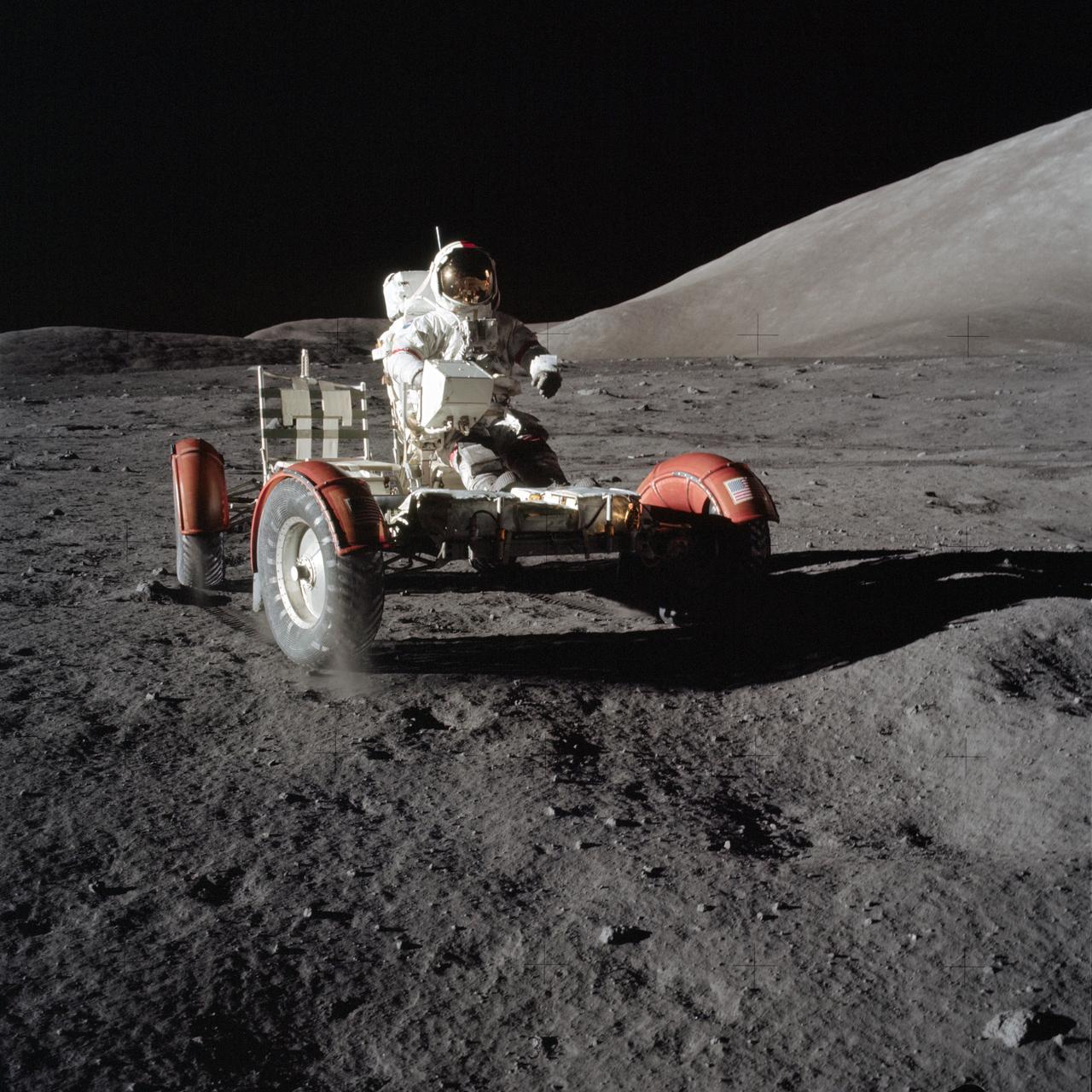 ALT
ALTGrab the Duct Tape!
The right rear fender extension of the LRV (Moon buggy) was torn off, kicking up dust as the crew drove, reducing visibility. The crew made a resourceful repair using duct tape and maps.
For LRV fans, visiting an LRV driven on the Moon is a bit difficult since all three LRVs used on the Apollo 15, 16, and 17 missions were left on the Moon. But you can find an LRV used for training at the National Air and Space Museum in Washington.
Read more about the LRV.
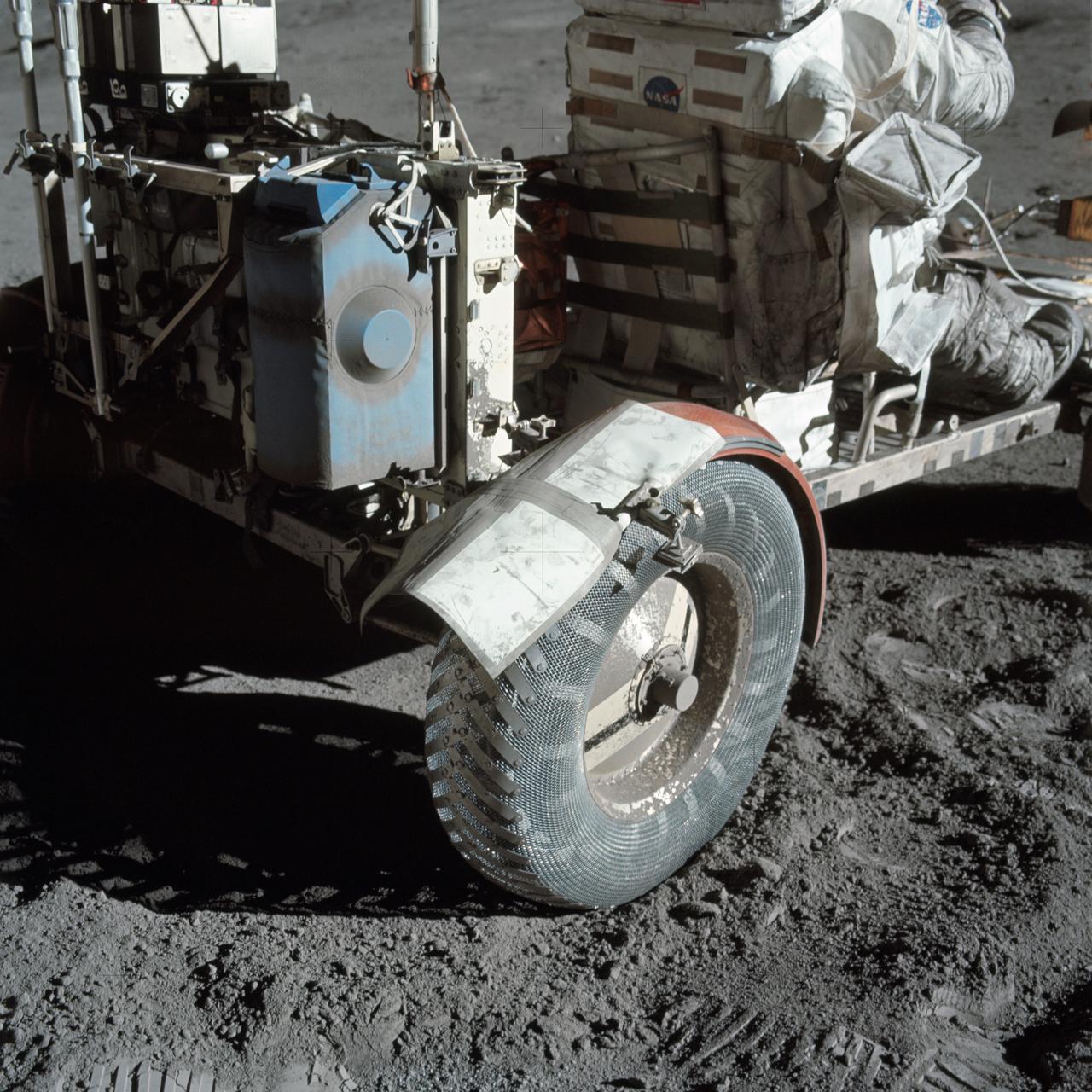 ALT
ALTThe Perils of Lunar Dust
After the first lunar EVA, Apollo 17 astronaut Harrison Schmitt reported that he suffered from “lunar hay fever” in reaction to the lunar dust. Unlike Earth’s dust particles which are rounded, Moon dust particles are sharp and abrasive, irritating astronaut eyes, nasal passages, and lungs.
Curious about how Moon dust feels and smells? Find out!
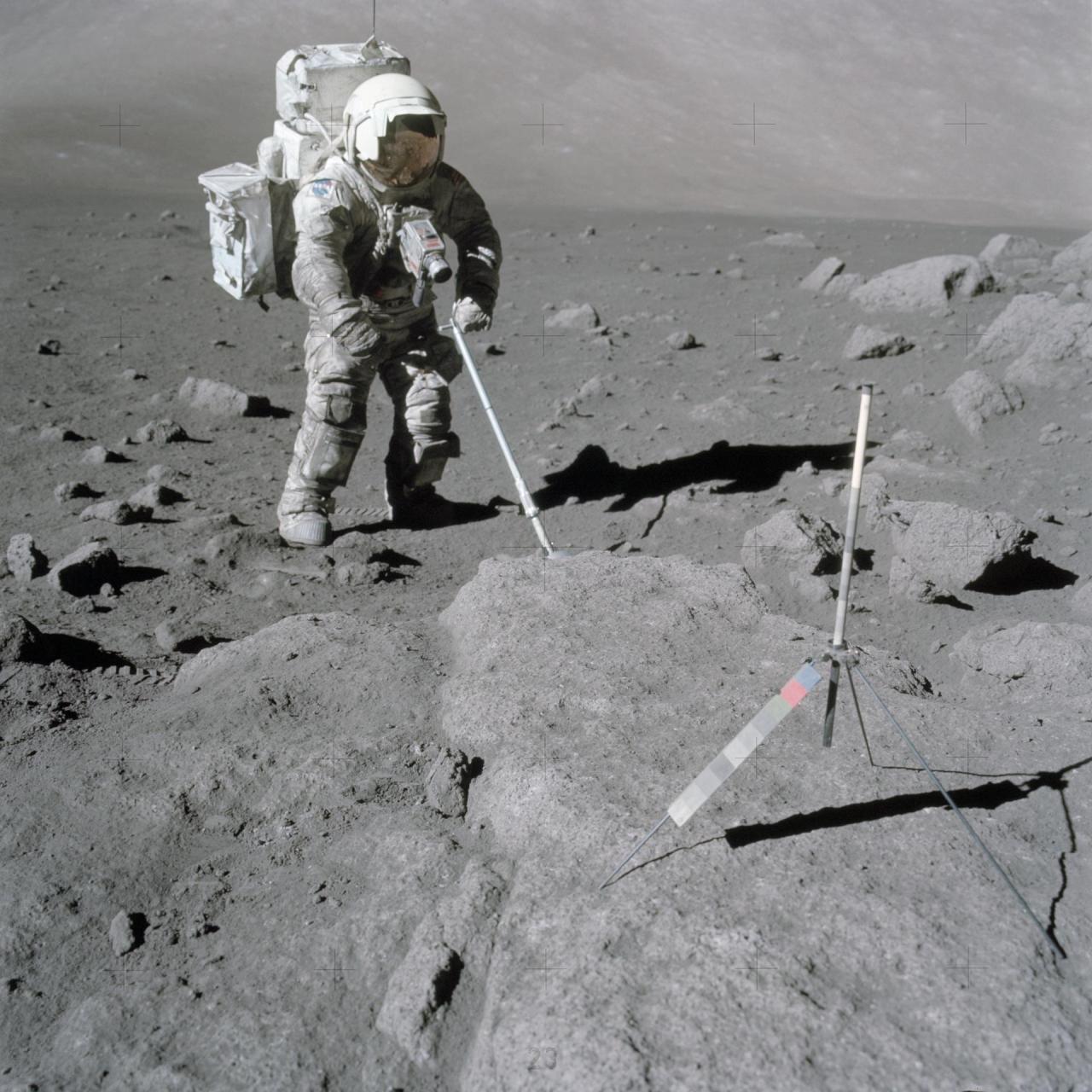 ALT
ALTSo What’s it Like?
After his return to Earth, Apollo 17 astronaut Harrison Schmitt (on the right) described his time on the Moon:
“Working on the Moon is a lot of fun. It’s like walking around on a giant trampoline all the time and you’re just as strong as you were here on Earth, but you don’t weigh as much.”
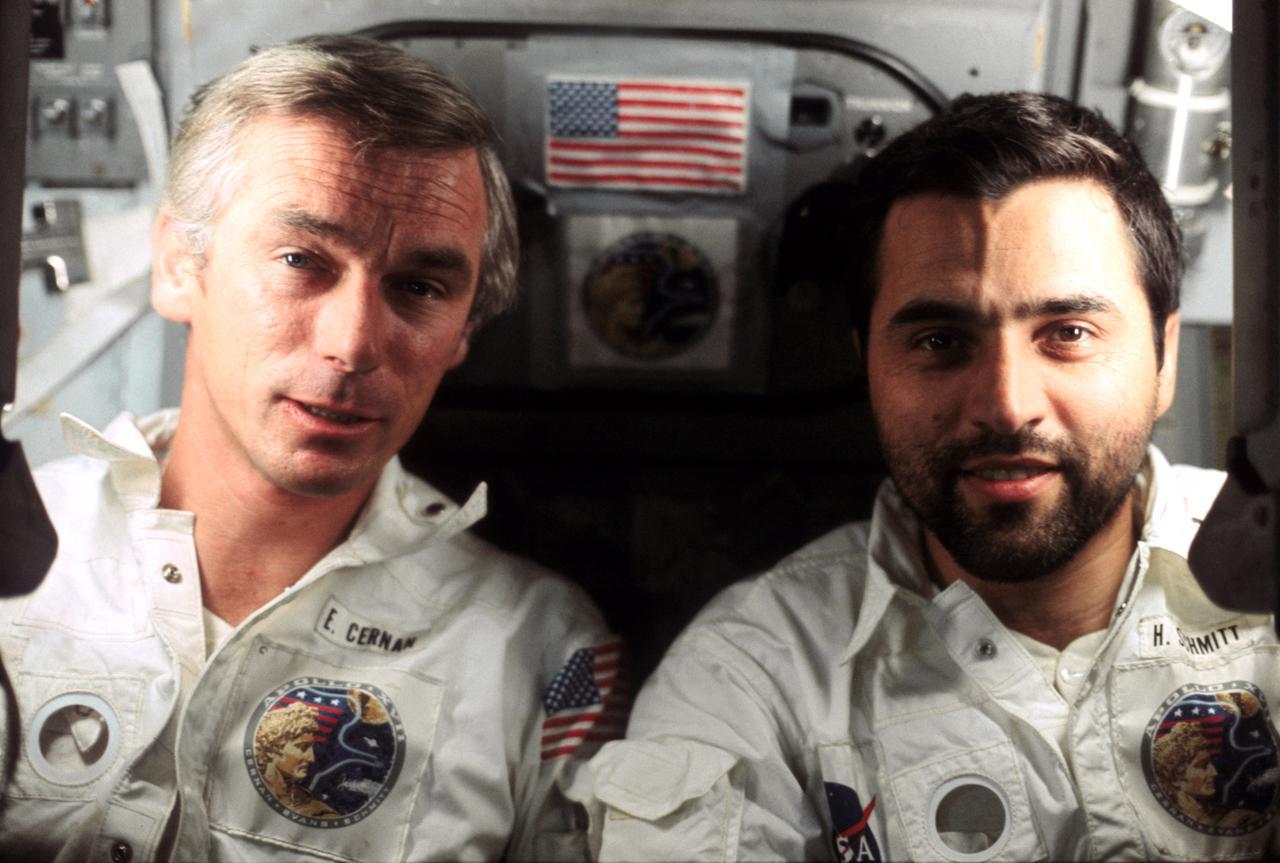 ALT
ALTSplashdown!
After 12 days and 14 hours in space, the Apollo 17 astronauts splashed down in the Pacific Ocean at 2:25 p.m. EST on Dec. 19, 1972. It was the longest of all the Apollo missions, with the most photos taken. A recovery team was waiting on the USS Ticonderoga just 4 miles (6.4 km) away to pick up the astronauts, the lunar samples, and the Crew Module.
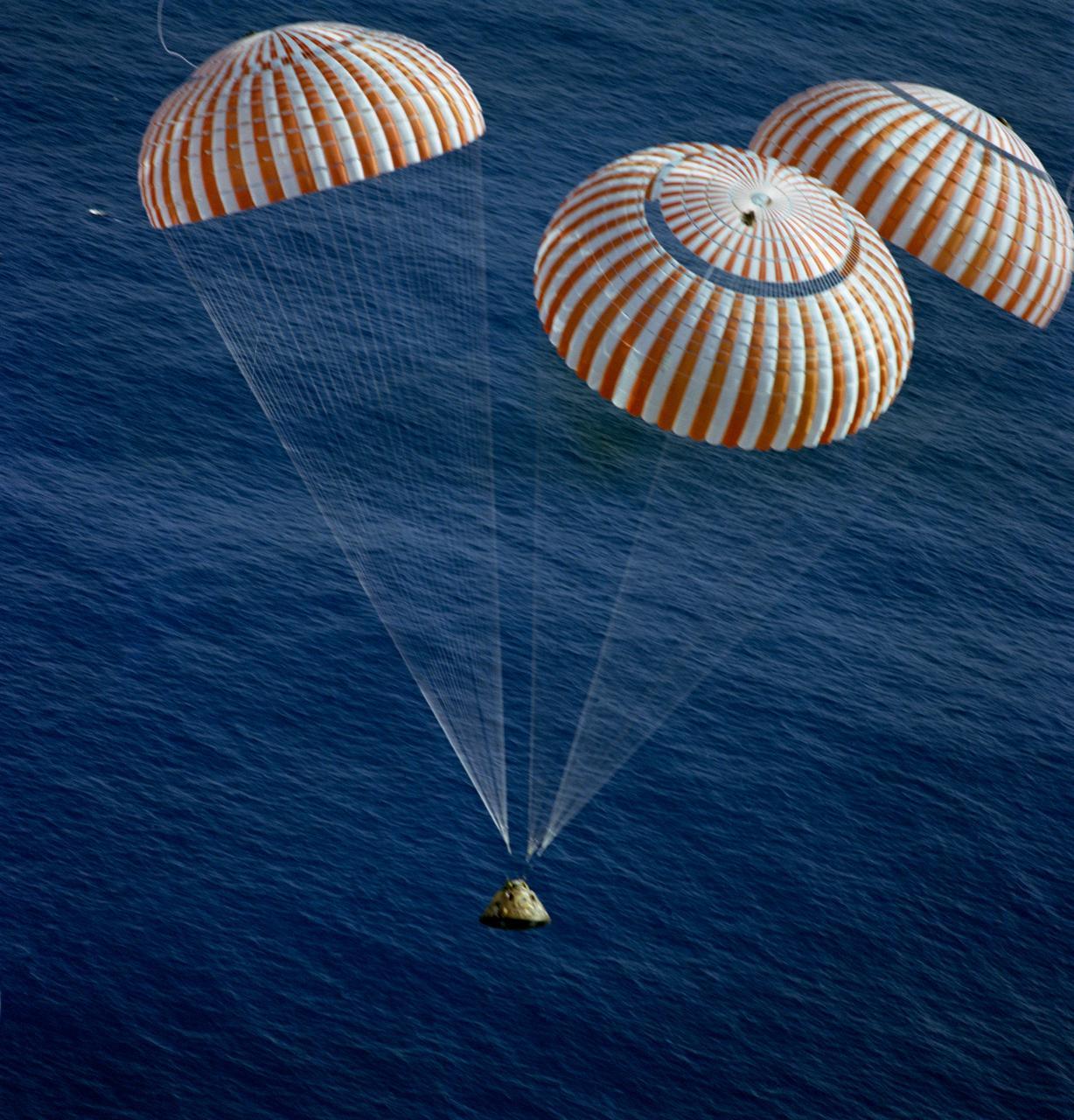 ALT
ALTWhen Are We Going Back?
NASA’s Artemis Program has taken its first steps to sending humans back to the Moon with Artemis I, currently on its way back to Earth. The program plans to land humans, including the first women and person of color, on the Moon’s south polar region with its Artemis III mission, currently slated to launch in 2025.
Is aerospace history your cup of tea? Be sure to check out more from NASA’s past missions at www.nasa.gov/history.
Make sure to follow us on Tumblr for your regular dose of space!
source: nasa.tumblr.com